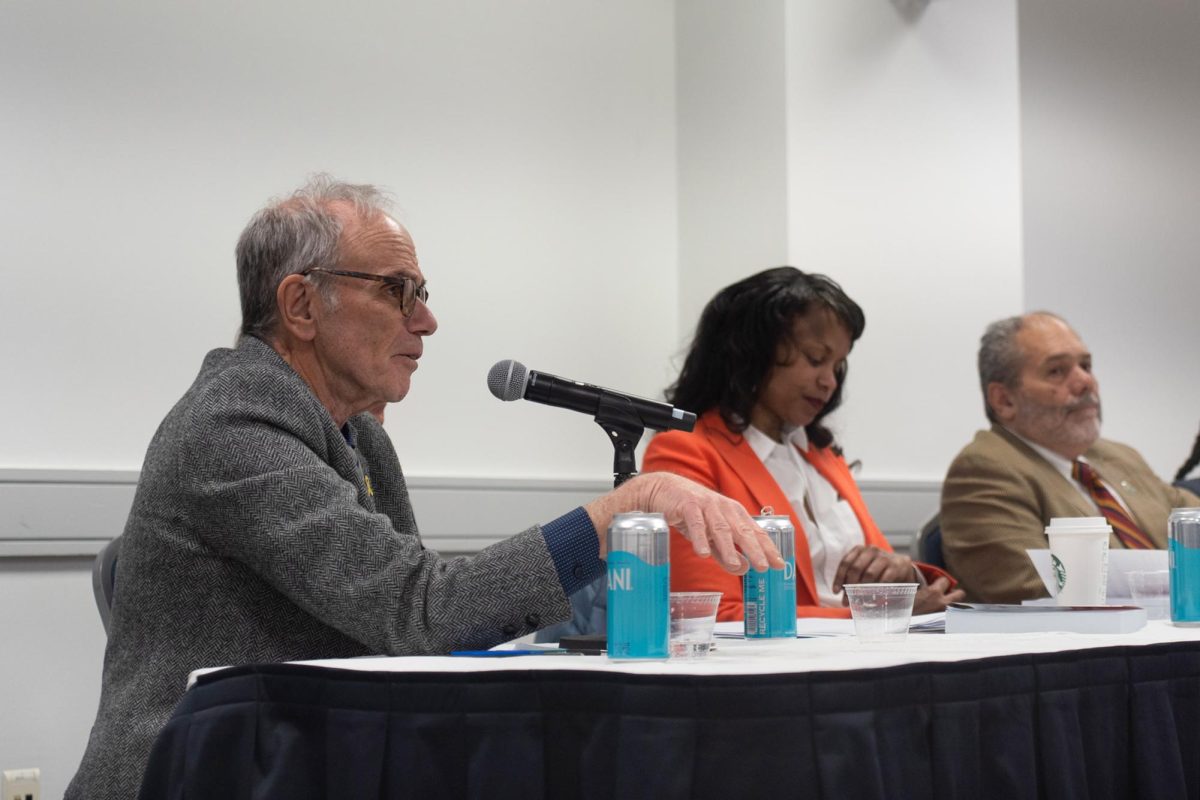Historians and professors from around the District gathered at GW this weekend for a show and tell about Foggy Bottom and D.C. history at the 28th Annual Conference on Washington, D.C. Historical Studies.
The conference, held in the Media and Public Affairs building from Thursday to Saturday, brought dusty history books and documents to life with presentations and a walking tour of the historical Foggy Bottom area.
Several presentations focused on Foggy Bottom, including a piece by GW alumnus William Crane about life in D.C.’s alleys. Crane spoke about the history of Snow’s Court, the block bounded by 24th, 25th, I and K streets.
University Archivist G. David Anderson narrated a slide show on Foggy Bottom, showing old pictures of the area and telling anecdotes about GW’s past, including a 1969 student takeover of Murry Hall, which now the International Monetary Fund building on F Street.
He also said composer John Philip Sousa was baptized at the United Church, at 20th and G streets, in 1854.
Following Saturday’s presentations, Anderson led an hour-long historical walking tour of Foggy Bottom. He revealed the history of buildings located on the Quad, including a school for orphans and the University’s old gym the “Tin Tabernacle,” and discussed historical land uses of the Foggy Bottom community, including carp farms, a racetrack, brewery and a gas works.
Anderson also discussed the history of the University, which was originally called Columbian College and was located on College Hill, between 14th and 15th streets on Florida Avenue. After changing downtown locations and names in the late 1800s, GW moved to Foggy Bottom in 1912.
Anderson said the University moved for a number of reasons, including increasing land costs downtown, the availability of inexpensive land in Foggy Bottom and the gift of the Woodhull family’s house at the corner of 21st and G streets. The house is now the University Police headquarters.
Anderson the factors that have changed “the character of the Foggy Bottom area are multi-faceted.” He said many agencies have removed historic buildings throughout the years besides GW, including the U.S. Departments of State, Interior and War and the IMF and the Whitehurst
Freeway.
The tour also included a stop by St. Mary’s Court on 24th Steet, the Foggy Bottom Historic District and the Watergate Complex. Anderson said the complex was so named because it was the site of the last lock, the “water gate,” of a canal that once ran through Foggy Bottom.
Sheila Wickouski, a resident of Southwest D.C. said she came to see the church architecture but enjoyed all of the tour. Wickouski also said she liked GW as a location for the conference as opposed to the “dank basement of the D.C. Public Library,” where it had been held in the past.
She said she hoped the conference is at GW next year.
Other attendees agreed.
“This is the perfect place to have it,” said C. V. Brooks, an independent researcher from Southwest D.C. “Part of the fun of doing this is that every day, you learn something new.”






